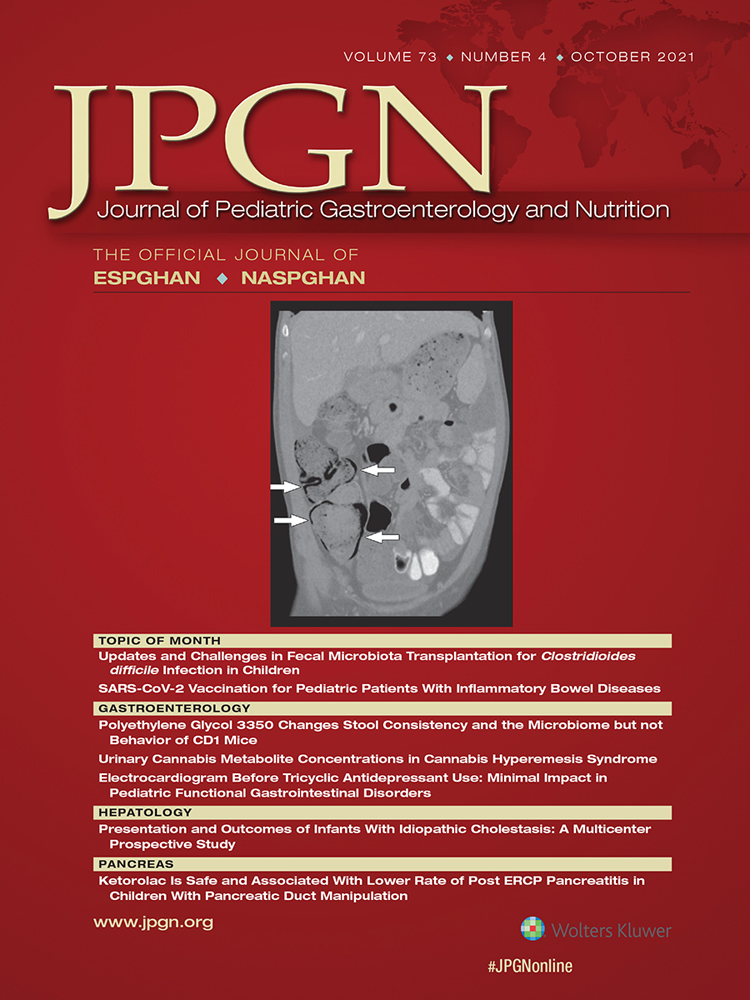Pediatric Collagenous Gastritis
Clinical and Histologic Outcomes in a Large Pediatric Cohort
The authors report no conflicts of interest.
Supplemental digital content is available for this article. Direct URL citations appear in the printed text, and links to the digital files are provided in the HTML text of this article on the journal's Web site (www.jpgn.org).
ABSTRACT
Objective:
The aim of the study was to present the clinical characteristics, treatment, and outcomes of pediatric collagenous gastritis (CG).
Method:
This is a retrospective cohort study. Patients were identified via query of the institutional pathology database. Clinical data was obtained by review of medical records.
Results:
Forty patients (57.5% female) were identified, mean age 11.3 ± 3.7 years (2–16years). Isolated CG was present in 66.7%, coexisting collagenous duodenitis (CD) in 17.5%, collagenous colitis (CC) in 7.5%, and collagenous ileitis in 2.5%. Atopic comorbidities were found in 25%, autoimmune comorbidities in 12.5%.
Presenting Symptoms:
Abdominal pain (77.5%), vomiting (65%), anemia (57.5%), nausea (55.5%), diarrhea (32.5%), anorexia (25.0%), weight loss (25%), gastrointestinal bleed (22.5%), poor growth (20%), poor weight gain (12.5%).
Endoscopic Findings:
All had abnormal endoscopic findings on esophago-gastro-duodenoscopy (EGD), most commonly gastric nodularity (77.5%), visible blood (20%), erosions/superficial ulcerations (10%), ulcers (7.5%). Histologically, all patients had increased subepithelial collagen deposition.
Treatment:
A variety of medications aimed towards inflammation and symptomatic treatment were used. Patients with anemia received iron supplementation and responded. Otherwise, there was no significant association of clinical or histologic improvement with specific treatments.
Clinical and Histologic Outcomes:
87.5% reported improvement or resolution of symptoms at the last follow-up (34.8 ± 27.0 months). Persistent sub-epithelial collagen was noted in 73.1% on the last EGD.
Conclusions:
Despite persistent findings of increased sub-epithelial collagen deposition during the follow-up period, most patients with CG show remission or resolution of clinical symptoms. Anemia responds to iron supplementation in all patients.




